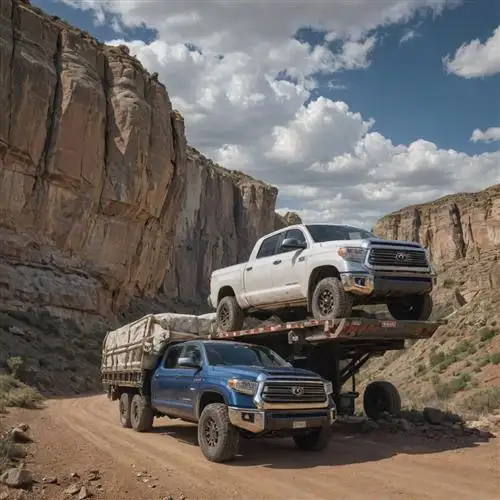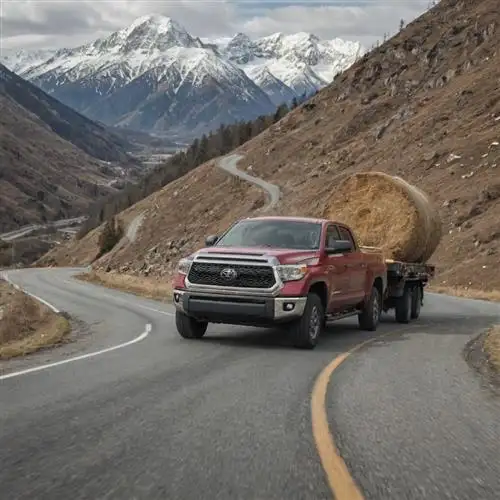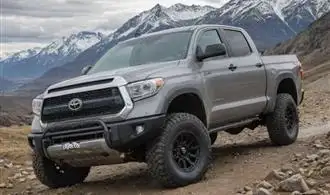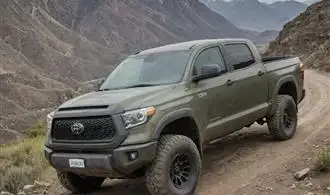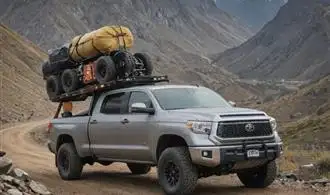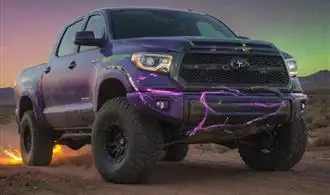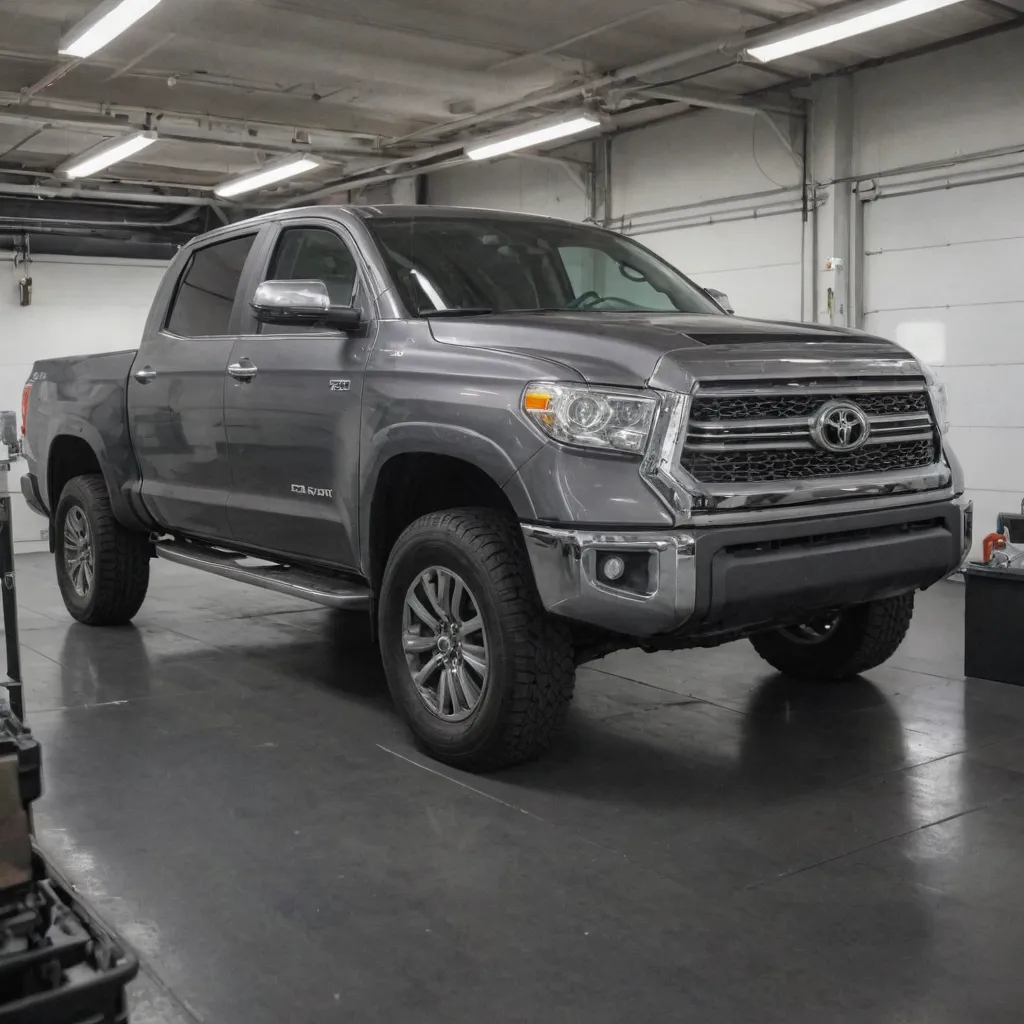
Maximize Towing Capacity
As a Toyota Tundra owner, optimizing your truck's towing capacity is key to maximizing its utility and versatility. Whether you're hauling heavy equipment, recreational vehicles, or trailers, understanding how to push your Tundra's towing limits can make all the difference. In this in-depth article, we'll explore essential tips and strategies to help you tow with confidence and efficiency.
Firstly, it's crucial to understand your Tundra's towing specifications. The maximum towing capacity can vary depending on the model year, engine configuration, and other factors. Familiarize yourself with your truck's towing capacity, payload capacity, and gross combined weight rating (GCWR). This information can be found in your owner's manual or by consulting with a Toyota dealer.
Next, optimize your Tundra's weight distribution. Proper weight distribution is essential for maintaining control and stability while towing. Ensure that the majority of the trailer's weight is positioned over the axles, with a slight tongue weight (typically 10-15% of the total trailer weight). Use a weight-distributing hitch or a fifth-wheel hitch to achieve the optimal weight balance.
Consider upgrading your Tundra's towing package. Many Tundra models offer optional towing packages that include features like a heavy-duty transmission cooler, upgraded suspension components, and more powerful brakes. These upgrades can significantly improve your truck's towing capabilities and overall performance.
Proper trailer maintenance and setup are also crucial for maximizing towing capacity. Ensure that your trailer's tires are properly inflated, the brakes are functioning correctly, and the lights are in working order. Additionally, consider installing a trailer brake controller to provide better control and stopping power while towing.
When towing, adjust your driving style to account for the increased weight and momentum. Maintain a lower speed, allow for longer braking distances, and be mindful of your surroundings. Avoid sudden maneuvers or aggressive acceleration, as these can compromise the stability and control of your Tundra-trailer combination.
Proper Load Distribution
Proper load distribution is a critical aspect of towing with your Toyota Tundra. Ensuring your cargo is evenly balanced and secured can make a significant difference in the handling and stability of your vehicle, ultimately enhancing your safety and the longevity of your truck. By understanding the principles of proper load distribution, you can maximize the towing capacity of your Tundra and enjoy a smoother, more controlled driving experience.
When it comes to load distribution, the key is to position the heaviest items as close to the front of the trailer or cargo area as possible, while still maintaining an appropriate tongue weight. The tongue weight, which is the amount of force exerted on the hitch by the trailer, should typically be between 10-15% of the total trailer weight. This weight distribution helps prevent the trailer from becoming unstable or causing your Tundra to sway, which can be dangerous at higher speeds.
In addition to positioning the heaviest items towards the front, it's also important to distribute the weight evenly across the width of the trailer or cargo area. Avoid placing all of the heavy items on one side, as this can lead to uneven weight distribution and potentially cause handling issues. By balancing the load, you'll ensure your Tundra maintains proper steering and braking response, allowing you to navigate turns and stop with confidence.
Another key consideration is the overall weight of your load. It's crucial to stay within the towing capacity of your Tundra, as exceeding this limit can put unnecessary strain on your vehicle's engine, transmission, and suspension components. Refer to your owner's manual or the information provided on the driver's side door jamb to determine the maximum towing capacity for your specific Tundra model.
Proper load distribution can also help improve your fuel efficiency when towing. By ensuring the weight is balanced and not placing an excessive burden on the front or rear of your vehicle, you'll reduce the amount of strain on the engine, ultimately leading to better fuel economy.
To ensure your load is properly distributed, it's a good idea to weigh your trailer or cargo before hitting the road. Many truck stops and RV dealerships offer scales where you can check the weight and make any necessary adjustments. Remember, taking the time to properly distribute and secure your load can make a significant difference in the handling, safety, and performance of your Toyota Tundra when towing.
Towing Accessories for the Tundra
When it comes to towing with your Toyota Tundra, having the right accessories can make all the difference. From heavy-duty hitches to specialized towing mirrors, these upgrades can enhance your truck's towing capabilities and provide added safety and convenience on the road. One essential component is a high-quality hitch, capable of handling the Tundra's impressive towing capacity. Look for a hitch that is rated for the maximum weight your truck can handle, ensuring a secure and stable connection to your trailer or camper. Towing mirrors are another valuable accessory, allowing you to maintain clear visibility of your trailer and the surrounding traffic. These mirrors can be manually or electronically adjustable, providing the perfect view for your specific towing setup.
Another important consideration is the weight distribution system. A weight distribution hitch helps to evenly distribute the load between the towing vehicle and the trailer, improving handling and stability. This can be particularly beneficial when towing heavy loads, as it can prevent the rear of the Tundra from sagging and improve the overall driving dynamics. Brake controllers are also a crucial accessory for safe towing. These devices integrate with your Tundra's braking system, allowing you to easily control the trailer's brakes and ensure smooth, coordinated braking during your journeys.
Driving Techniques for Towing
Towing a trailer or heavy load with a Toyota Tundra requires careful attention to driving techniques to ensure safety and stability. The Tundra's impressive towing capacity means you can haul a variety of trailers, but mastering the art of towing is essential. Start by ensuring your Tundra is properly equipped for the task, with the right hitch, wiring, and safety chains. Adjust your driving style to accommodate the extra weight and size of your load.
Maintain a slower speed, typically 5-10 mph below the posted limit, to give yourself more time to react and control the vehicle. Avoid sudden braking or accelerating, as this can cause the trailer to sway or put undue strain on your Tundra's drivetrain. When navigating turns, take them wider than usual to prevent the trailer from cutting the corner and potentially jackknifing. Be mindful of your vehicle's blind spots, as the trailer can significantly increase your rig's overall length.
Downshift when going downhill to utilize engine braking and reduce the strain on your Tundra's brakes. Conversely, when climbing hills, downshift to maintain a steady, controlled speed and prevent your transmission from overworking. Consider using tow/haul mode, if equipped, to optimize your Tundra's performance while towing.
Pay close attention to road conditions and weather, as these factors can greatly impact the handling and stability of your towing setup. Avoid driving in high winds, heavy rain, or icy conditions if possible, as these can make controlling your rig much more challenging. If you must drive in inclement weather, reduce your speed and increase following distance to allow for more reaction time.
Maintenance for Towing
Maintaining your Toyota Tundra for towing is crucial to ensure a smooth and safe experience on the road. Proper maintenance not only extends the lifespan of your truck but also enhances its towing capabilities, allowing you to tackle even the most challenging tasks with confidence. From regularly checking your hitch and trailer connections to keeping your engine in top shape, attention to detail is key.
One of the most important maintenance tasks for towing with your Tundra is to regularly inspect the hitch and trailer connections. Ensure that the hitch is securely attached to your vehicle and that all necessary components, such as the ball mount and safety chains, are in good condition. Regularly clean and lubricate these components to prevent wear and tear, and make any necessary adjustments to ensure a tight and secure connection.
Equally important is the maintenance of your Tundra's engine and drivetrain. Towing can put significant strain on these components, so it's essential to stay on top of regular oil changes, filter replacements, and other preventative maintenance. Consider upgrading to a high-quality synthetic oil, which can better withstand the demands of towing. Additionally, ensure that your transmission fluid is fresh and at the proper level, as towing can accelerate the breakdown of this vital fluid.
Brakes are another critical component to monitor when towing with your Tundra. Regularly inspect your brake pads and rotors, and be sure to replace them as needed. Consider upgrading to a more robust brake system, such as a heavy-duty or performance-oriented setup, to handle the increased demands of towing. Additionally, make sure your trailer brakes are properly connected and functioning correctly.
Maintaining the proper tire pressure and condition is also essential for towing safety and performance. Ensure that both your Tundra's tires and the tires on your trailer are inflated to the recommended pressures, and keep a close eye on tread depth and overall tire health. Rotate and balance your tires regularly to promote even wear and maximize their lifespan.


